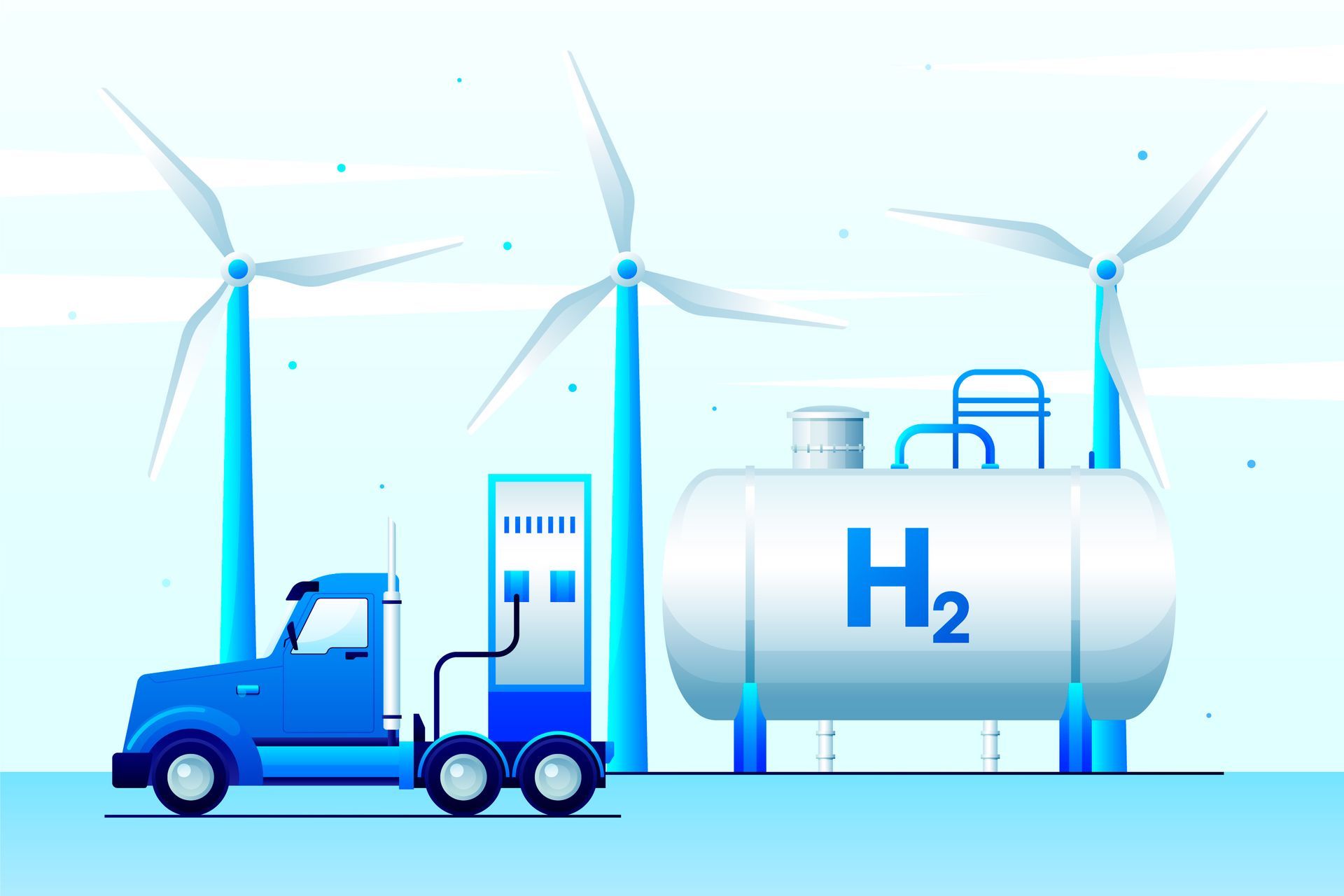About the author: Indiana Lee is a writer and journalist from the Pacific Northwest with a passion for covering workplace issues, environmental protection, lifestyle improvements and more. In her off time she enjoys exploring the wilderness with her two dogs. You can reach her at indianaleewrites (at) gmail.com
The environmental effects of deodorant and its production
Author: Indiana Lee
Traditional production of deodorant involves chemical preservatives and compounds detrimental to the environment. Many deodorant manufacturers are moving away from using these ingredients. Instead, they are exploring all-natural alternatives. This enables deodorant manufacturers to provide eco-friendly products. Plus, it helps these manufacturers stand out from rivals.
As a consumer, you must have a clear understanding of the environmental effects of deodorant and its production. This helps you differentiate between traditional and all-natural deodorants. In addition, it may lead you to make eco-conscious buying decisions regarding deodorant moving forward.
How Deodorant Is Made
Traditionally, the deodorant manufacturing process consists of the following steps:
- Batching: Ingredients are mixed together.
- Filling: Deodorant sticks are filled.
- Finishing: Deodorant sticks are heated under infrared light, moved through a refrigeration tunnel, and solidified.
Deodorant manufacturers follow safety testing guidelines from the Cosmetics, Toiletries, and Fragrance Association. These guidelines are not mandatory. However, they help manufacturers take precautions to minimize the risk of safety issues during deodorant production.
Why Deodorant Manufacturers Are Exploring Environmentally Friendly Production Alternatives
The global deodorant market was worth $22.5 billion in 2018. It is projected to be worth nearly $30.8 billion by 2026. As this market grows, deodorant manufacturers must plan accordingly. They must explore ways to distinguish their products from those of their rivals. One such way to do that is to provide customers with eco-friendly products. Eco-friendly products are more in-demand than ever.
Along with driving sales and revenues, deodorant manufacturers can explore eco-conscious production alternatives that deliver long-lasting benefits across several areas.
1. Personal Health
Many people use deodorant every day. Deodorant can help you smell good and feel refreshed. Yet, it can inadvertently damage your health.
Research indicates some deodorant products may be harmful. For example, antiperspirant deodorant contains a high volume of aluminum, which may or may not contribute to breast cancer and other illnesses. This type of deodorant can also cause skin irritation.
Those who work in deodorant manufacturing plants face health dangers, as well. A manufacturing plant employee may handle various chemicals when producing deodorant. The worker can take safety precautions but still risk exposure to harmful chemicals. In these instances, inhaling chemicals can lead to symptoms like hives, headaches, and irritation — to name a few.
2. Plastic Waste
15 million pounds of plastic waste is created by the deodorant industry annually. This is causing many deodorant manufacturers to reconsider how they package their products.
Thus far, deodorant manufacturers are evaluating myriad eco-friendly packaging options. Some manufacturers offer refillable deodorants, which feature reusable cases and refillable inserts. Others are searching for ways to reduce the amount of plastic they use in their packages or eliminate plastic packaging altogether.
Deodorant manufacturers have made strides in their efforts to cut down plastic waste. As the push for eco-conscious packaging continues, these manufacturers may discover innovative ways to make their products more environmentally friendly than ever before. This could be good news for our oceans and landfills.
3. Air and Water Pollution
Deodorants contribute the same amount of air pollution as motor vehicles. Deodorants emit volatile organic compounds that can lead to fog. Fortunately, many deodorant manufacturers are aware of this issue and are working to address it.
Also, deodorant can contain triclosan, an antibacterial chemical that reduces bacterial contamination and prevents body odor. Triclosan is beneficial for those who wear deodorant to avoid smells, but those same chemicals are washed off the body during a shower or bath. In this instance, triclosan travels down the drain and into waterways. At this point, triclosan can sit on the water’s surface and harm aquatic organisms.
Why You Should Choose Environmentally Friendly Deodorant Over Traditional Options
Deodorant manufacturers are changing the environment, for better or worse. Certain manufacturers continue to follow traditional processes to produce their products. Meanwhile, others are considering eco-friendly options to produce quality products that won’t harm the environment.
It pays to know which deodorants are environmentally friendly. To find these deodorants, learn about the companies that produce them. Gain insights into how manufacturers create their products and what ingredients they include. From here, you can see if a deodorant manufacturer prioritizes sustainability.
Oftentimes, you can get information about a deodorant manufacturer’s commitment to sustainability directly on its product’s label. A manufacturer may include details about how it locally sources its product’s ingredients. Or, the manufacturer may provide information about its mission and values. This information gives you a good idea about a manufacturer’s commitment to helping the environment.
Keep an eye out for zero-waste deodorants, too. These deodorants are becoming increasingly available around the world. They may cost a few dollars more than traditional deodorants. Regardless, zero-waste deodorants may provide long-term environmental benefits that make these products exceedingly valuable.
The Bottom Line on the Environmental Effects of Deodorant and Its Production
Applying deodorant is a part of most people’s daily routine. If you want to get the most value out of your deodorant, learn as much as you can about it. Then, you can find out if your deodorant is environmentally friendly. If not, you can explore eco-friendly alternatives and choose a deodorant that serves both you and the environment well for many years to come.

More articles!

By EuroScientist Editor
•
07 Sep, 2023
Hydrogen fuel can be made from wood waste in a clean and cost-efficient way at heat and power plants – and its developers hope it could change the narrative around this sometimes-controversial solution. By Steve Gillman & Fintan Burke The costs of scaling up hydrogen power, along with the potential amount of energy and natural resources to produce it, have seen this fuel source face increased scrutiny as a solution against climate change. “The majority of our electricity and hydrogen is produced from fossil fuels. This, of course, is not sustainable as it contributes to climate change,” said Michael Bartlett, a founder of Phoenix Biopower, a company that turns natural waste into combustible gas, like hydrogen. As part of a research project called Bio-FlexGen, Bartlett is developing ‘green hydrogen’ from biomass waste from the forestry sector. “Our ultimate goal is to provide a secure, renewable and low-cost energy for society and industry,” he adds. Bio-FlexGen, and its multidisciplinary team of 14 partners from five EU countries, aim to provide the technology for combined heat and power plants (CHP) that can also generate a supply of green hydrogen in addition to usual outputs of electricity and heat. To make green hydrogen, Bio-FlexGen will use a combination of two main technologies – a gas turbine and a gasifier. First, waste biomass is added in a gasifier at pressure and heated up to 850 Celsius – a temperature so hot that it releases other gases, mainly hydrogen, methane, and carbon monoxide. The next step sees water and steam added to cool before it passes through a cleaning filter. “Once we have cleaned up the gases from the gasifier, we can either send it to the gas turbine for combustion and electricity generation or to a hydrogen production unit,” said Bartlett, adding that this process gives “enormous power” and efficiency to the CHP plant. The high temperatures of this process, over 1400 Celsius in the gas turbine combustor, also result in greater power generation. To ensure a high efficiency, the system is designed to gather waste heat and recycle it back into the gas turbine in the form of hot steam. This, Bartlett says, can result in double the electricity output that is typical for a given amount of biomass. The new approach means the CHP plant then has three modes of operation; 1/ produce heat and electricity efficiently from biomass in the winter 2/, produce green hydrogen and biogenic CO2 from biomass in the summer 3/ utilise hydrogen in the gas turbine for peak power. This flexibility means it can help keep costs low and stable and complements the hourly, weekly and seasonal variability of solar and wind power. Converting critics and pushing EU hydrogen plans ahead Bio-FlexGen’s systematic approach to incorporating green hydrogen could go a long way in negating the main arguments against this renewable energy, primarily the amount of natural resources it requires for its production. According to Rystad Energy, 620 million cubic meters of water are needed to produce 85% of the green hydrogen capacity planned for 2040. However, environmental groups like Greenpeace argue that renewable power alone is not enough to produce the needed amount of green hydrogen. If anything, they claim this may end up increasing fossil fuel demand. But Bio-FlexGen’s green hydrogen production utilises oxygen to drive the gasification process, itself a by-product of green hydrogen production from wind and solar power. “The main advantage of getting hydrogen from biomass compared to wind or solar is that it has less variability and is not dependent on electricity price,” said Bartlett. “It also requires less H2 storage (you store biomass instead) for when the wind doesn't blow.” When producing electricity from biomass in the CHP plant, a lot of steam is needed in the gas turbine for the best effect. In fact, 50% of the exhaust is just water vapour. This water is recovered, treated and recycled back to this process, and an excess of clean water can even be produced for other consumers. When this water is recovered, it also generates large amounts of heat, which the project can use further in district heating networks or other processes. In this way all the energy in the biomass is efficiently used. “We are working very hard to ensure that we are part of a circular biomass utilisation and that we are using hydrogen in the safest possible way,” explains Bartlett, adding that the project will make a “significant contribution to the decarbonisation of the energy system”. The first commercial plant using Bio-FlexGen’s approach is planned for 2030, in which the power plant will operate on biomass in the winter months and use 100% green hydrogen in the summer months, therefore displacing demand for fossil fuels in peak periods – a goal increasingly shared by EU policymakers. Following the war in Ukraine, and the embargo on Russian oil imports into the EU, the European Commission outlined a ‘Hydrogen Accelerator' concept to scale up renewable hydrogen deployment. This ‘REPowerEU Plan’ wants the EU to produce 10 million tonnes of renewable hydrogen by 2030, with the Commission recently proposing criteria that Member States can follow to ensure they produce green hydrogen, including that it only be produced when and where sufficient renewable energy is available. As BioFlexGen’s power plant will operate with up to 100% green hydrogen from solar and wind, with an optimised combination of bioenergy, it is already on course to meet these criteria. Bartlett also believes that the project has brought together “amazing, competent people” that can play a key role in developing green hydrogen further.

By EuroScientist Editor
•
07 Sep, 2023
Author: Jane Marsh Scientists are researching a theory known as positive climate tipping points. While most people talking about tipping points concentrate on their negative consequences, such as irreparable harm to ecosystems, positive tipping points provide a ray of hope. These points may result in favorable and constructive changes to our planet's climate system as the effects of climate change continue. Learn more about the idea of positive climate tipping points, consider their possible advantages and discuss their significance in understanding and tackling the problems caused by climate change. Understanding Tipping Points To fully understand positive climate tipping points, it is essential first to understand what tipping points are. Tipping points are key thresholds in a complex system where a minor change can cause significant and sometimes irreversible changes in the system's behavior. Harmful climate change tipping points may be the first type that comes to mind. These relate to occurrences like the melting of significant ice sheets or the disruption of essential ocean currents, which can have quick and harmful repercussions. However, there are also positive tipping points that may shape the future climate. Positive Climate Tipping Points Unlike negative climate tipping points, positive ones can increase ecosystem resilience and bring about encouraging changes. These turning points take place when certain environmental activities or changes trigger self-reinforcing mechanisms that improve the earth's capacity to absorb carbon dioxide, lower greenhouse gas emissions or support the preservation of vital habitats. Forest preservation and restoration is one illustration of a favorable climate tipping point. As forests grow and recover, they sequester a greater amount of carbon dioxide, which lowers the levels of greenhouse gases in the atmosphere. This process creates a positive feedback loop that encourages greater forest development and improves the ability of these ecosystems to control the temperature. Relevance and Implications of Positive Tipping Points Positive climatic tipping points must be recognized and utilized for mitigation and adaptation initiatives to succeed. Scientists and decision-makers can create targeted interventions to improve the planet's resilience and lessen the effects of climate change by identifying and utilizing these tipping points. Climate tipping points can also encourage and inspire group action. They provide concrete instances of how individual and group activities, such as reforestation programs, sustainable land management techniques and ecosystem restoration projects, can significantly contribute to the fight against climate change. The general public may take inspiration in carrying out sustainable behaviors or supporting laws that help effect positive change. Emphasizing these positive tipping points' potential advantages and ripple effects encourages individuals at all levels. While positive climate tipping points have great potential, it is important to recognize that our understanding of them is still developing. Further research is necessary. These tipping points require identification, monitoring and measurement, which demands continual study and scientific cooperation. Scientists use advanced modeling approaches and thorough data analysis to find potential positive tipping points across different ecosystems. Researchers are also looking into how positive and negative tipping points are connected. Scientists can create comprehensive plans to negotiate the intricacies of climate change and maximize beneficial results by thoroughly comprehending the relationships between these tipping points. Positive Climate Tipping Points Could Be a Game-Changer Positive climate tipping points demonstrate optimism in the fight against climate change. If people locate and utilize these tipping points, we may be able to develop self-reinforcing mechanisms that positively affect our planet's climate system. Scientists, decision-makers and people can take proactive measures in climate change prevention and adaptation by comprehending the significance of positive tipping points and their potential ramifications. The complexity of positive climate tipping points must be further understood through ongoing research and monitoring projects to successfully navigate the challenges of climate change and create a more resilient and sustainable future.

By EuroScientist Editor
•
18 Jul, 2023
It’s no secret that the planet is getting warmer, but July 2023 saw record-high temperatures that really turned heads. 2023 is an El Niño year — in addition to human-caused climate change, the Earth is undergoing an expected cycle of exceptionally warm weather that occurs every few years.
This double whammy has many people reaching for their water bottles and cranking up the AC. Why are scientists so worried about the heat?

By EuroScientist Editor
•
03 Jul, 2023
Hydrogen fuel cells have garnered a lot of attention recently. As the global conversation shifts to emissions-free energy, many people want to know how fuel cells work, whether they could replace internal combustion engines someday and if they can power homes. Here are answers to common questions about the technology.



